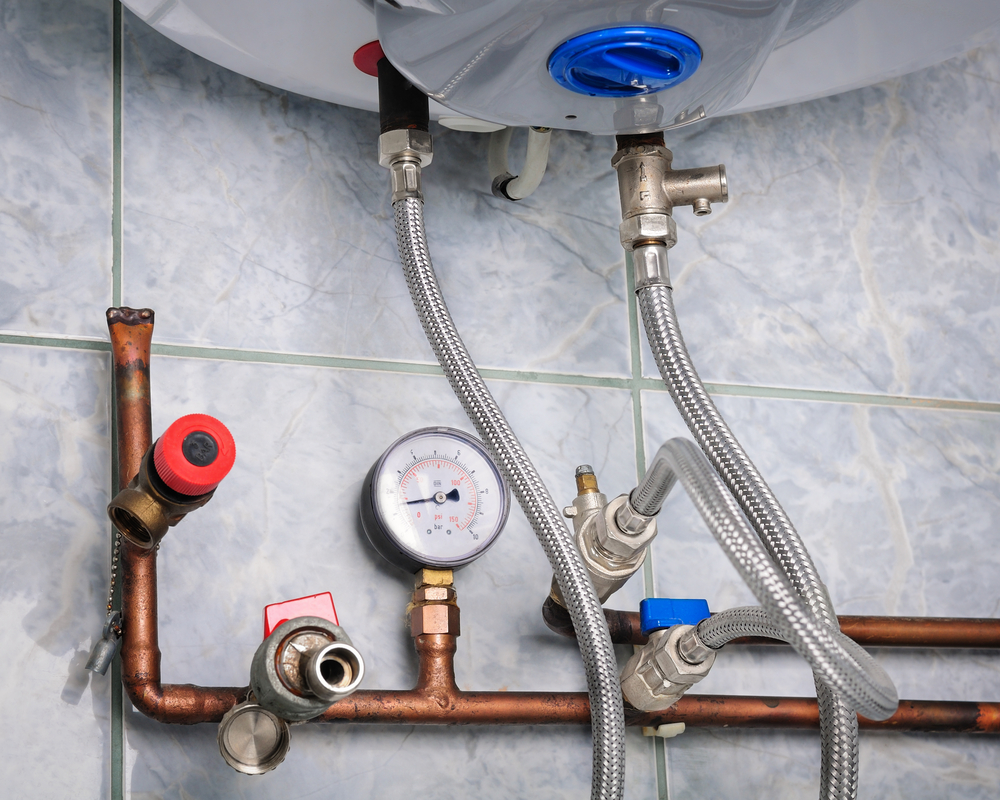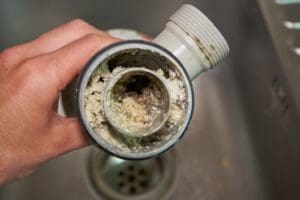Do you find yourself in search of help and advice involving 10 Reasons for Low Water Pressure in Your House?

Low water stress in your house can be an aggravating trouble, affecting every little thing from showering to cleaning meals. If you're experiencing weak water circulation, there are a number of feasible reasons and remedies to discover. In this guide, we'll talk about usual factors for low tide pressure and practical steps to attend to the concern effectively.
Intro to Low Tide Stress
Low water stress occurs when the circulation of water from your taps, showers, and other fixtures is weak than usual. This can make everyday jobs more challenging and less efficient. Understanding the root causes of low water stress is crucial to locating the best option.
Common Causes of Low Water Pressure
Pipeline Obstructions
With time, pipes can come to be blocked with mineral deposits, sediment, or debris, restricting the circulation of water. This is a typical problem in older homes with galvanized steel pipes.
Rust
Deterioration within pipelines can lead to leakages and lowered water pressure. Rust accumulation can constrict water circulation, specifically in maturing plumbing systems.
Faulty Pressure Regulators
Pressure regulatory authorities are accountable for keeping consistent water stress in your home. If they malfunction, it can cause low tide pressure or uneven circulation throughout your house.
Community Water Issues
Occasionally, the trouble lies outside your home. Metropolitan water system issues, such as main line leakages or upkeep job, can briefly minimize water pressure in your location.
Just How to Detect Low Tide Stress
Examining Taps and Fixtures
Start by checking the water pressure at various taps and fixtures throughout your home. If the issue is isolated to specific locations, it may show local troubles.
Examining Pipes
Inspect visible pipelines for indicators of leaks, deterioration, or obstructions. Focus on any type of unusual audios, such as banging or rattling pipes, which might suggest issues within the plumbing system.
Consulting with a Plumber
If you're not able to identify the root cause of low tide pressure, take into consideration hiring a professional plumber to conduct a complete inspection. They can determine underlying concerns and recommend suitable services.
Do It Yourself Solutions to Deal With Low Tide Pressure
Cleaning Up Aerators and Showerheads
Natural resources can collect in aerators and showerheads, decreasing water circulation. Eliminate and cleanse these components consistently to enhance water pressure.
Flushing Hot Water Heater
Sediment accumulation in the hot water heater can limit circulation and minimize efficiency. Purging the storage tank periodically helps eliminate debris and keep optimal performance.
Inspecting Stress Regulator
Make certain that the stress regulator is functioning correctly. Adjusting or replacing the regulatory authority can aid bring back appropriate water stress throughout your home.
Cleaning Clogs in Pipeline
For small blockages, try using a plumbing snake or chemical drain cleaner to clear obstructions in pipelines. Beware when utilizing chemicals and follow safety standards.
When to Call a Specialist Plumber
If do it yourself initiatives fall short to settle the concern or if you presume considerable plumbing issues, it's best to seek help from an accredited plumber. They have the know-how and devices to address intricate problems securely and efficiently.
Safety Nets to Preserve Water Pressure
Regular Upkeep
Arrange routine upkeep for your plumbing system to prevent concerns such as deterioration, leaks, and obstructions. Dealing with small troubles early can assist prevent even more considerable repair services in the future.
Setting Up a Pressure Booster
Take into consideration installing a pressure booster pump to improve water pressure in areas with continually reduced flow. This can be specifically beneficial for multi-story homes or residential or commercial properties with high-demand fixtures.
Tracking Water Use
Bear in mind water use routines and prevent overtaxing the plumbing system. Straightforward modifications, such as staggering showers and laundry loads, can help maintain sufficient water stress.
Final thought
Handling low tide pressure can be frustrating, however determining the underlying causes and carrying out proper remedies can recover optimal circulation throughout your home. Whether it's cleaning aerators, checking pipes, or consulting with a plumber, taking aggressive actions can ensure a constant supply of water for your day-to-day demands.
FOUR WAYS TO FIX LOW WATER PRESSURE NOW
Turning on a shower or faucet only to find the water comes out in a sad, slow drizzle is never a good feeling. How exactly are you supposed to wash a pan or take a quick shower when it takes 10 minutes just to rinse off a little soap? The good news is that when your water pressure is bad, there's always a cause: typically one that can be easily fixed. Here are some of the most common causes of low pressure and what you can do to fix the issue:
DEBRIS AND MINERAL DEPOSIT BUILDUPS
If you notice low water pressure from just one or two of the fixtures in your house, the problem likely has to do with debris buildup. Water is full of minerals and other debris, all of which can accumulate in your pipes and on your fixtures. This can cause a blockage that affects how much water flows through. To fix this, try filling a small plastic bag with white vinegar, and use a rubber band to hang it around your showerhead or faucet. Let the head of the fixture soak for a few hours, and the vinegar should loosen the deposits.
WATER LEAKS
Leaks are another common cause of low water pressure. If water is flowing out of your plumbing through a hole or crack before it can reach your fixture, the pressure coming out of the faucet or showerhead will be lower. A plumbing professional is your best bet for finding and repairing a leak in your water supply pipes.
Leaks are another common cause of low water pressure. If water is flowing out of your plumbing through a hole or crack before it can reach your fixture, the pressure coming out of the faucet or showerhead will be lower. A plumbing professional is your best bet for finding and repairing a leak in your water supply pipes.
FOUR WAYS TO FIX LOW WATER PRESSURE NOW
Turning on a shower or faucet only to find the water comes out in a sad, slow drizzle is never a good feeling. How exactly are you supposed to wash a pan or take a quick shower when it takes 10 minutes just to rinse off a little soap? The good news is that when your water pressure is bad, there's always a cause: typically one that can be easily fixed. Here are some of the most common causes of low pressure and what you can do to fix the issue:
DEBRIS AND MINERAL DEPOSIT BUILDUPS
If you notice low water pressure from just one or two of the fixtures in your house, the problem likely has to do with debris buildup. Water is full of minerals and other debris, all of which can accumulate in your pipes and on your fixtures. This can cause a blockage that affects how much water flows through. To fix this, try filling a small plastic bag with white vinegar, and use a rubber band to hang it around your showerhead or faucet. Let the head of the fixture soak for a few hours, and the vinegar should loosen the deposits.
WATER LEAKS
Leaks are another common cause of low water pressure. If water is flowing out of your plumbing through a hole or crack before it can reach your fixture, the pressure coming out of the faucet or showerhead will be lower. A plumbing professional is your best bet for finding and repairing a leak in your water supply pipes.
Leaks are another common cause of low water pressure. If water is flowing out of your plumbing through a hole or crack before it can reach your fixture, the pressure coming out of the faucet or showerhead will be lower. A plumbing professional is your best bet for finding and repairing a leak in your water supply pipes.
A VALVE ISSUE
If you have low water pressure throughout your home, check your main shut-off valve to make sure it's completely open. You may also want to see if there's a pressure-reducing valve installed. If there is, have a plumber help you adjust the settings to get the pressure you're looking for.
OTHERS USING WATER
Believe it or not, your low water pressure could be caused by your neighbors. If you notice low pressure at certain times of day, it may be because you and the people living next to you have similar schedules - when everyone is showering at the same time, the pressure will be lower in every home. Low pressure throughout the neighborhood may also be caused by an issue with your municipal water supply. If that's the case, call the supplier to see if they're working on the issue.
https://www.rotorooter.com/blog/water-leaking/low-water-pressure-fixes/

I am very interested by and I am praying you enjoyed reading my blog entry. Do you know about another person who is fascinated by the topic? Be sure share it. We value your readership.
Call Today